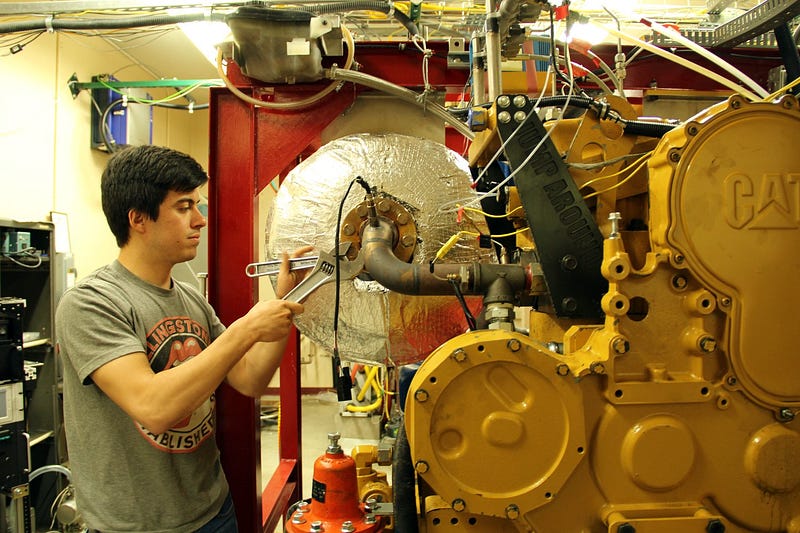By Nick Moulton

Cars have always been an icon in American culture. An aura of freedom and independence is associated with automobile ownership. Track races like the Indy 500 have highlighted the confidence and courage of champion drivers. The internal combustion engine is an invention that has distinctly changed everything from a worldwide perspective. All of a sudden, automobiles made far distances more easily accessible, and a little over a decade later, airplanes gave expeditions and vacations with infinitely more possibility. A journey halfway around the world could be accomplished in a single 18-hour trip.
It is important to note that the word “engine” has a broad definition. Formally, an engine is a machine that changes one form of energy into mechanical “work” energy; however, there are many different types of engines that serve different purposes. The most common engine is an internal combustion engine, a type of heat engine that burns fuel to generate a force. In electrical engines, attraction and repulsion forces within the motor’s magnetic field produce mechanical energy. Another type of engine, the pneumatic engine, expands compressed air to achieve the force. These engines vary in how they generate force, but the active manipulation of a form of energy to create a force that does work classifies them as engines.
Approximately one and a half centuries ago, Etienne Lenoir, a Belgian engineer, developed a prototype from which the modern vehicle’s engine was developed. He created a spark ignition engine with a relatively long lifespan compared to existing prototypes. Thirty years later, in 1889, minor adjustments changed the original double-acting engine to a more common four-stroke engine. Other technological advances also made for a higher power-to-weight ratio. Finally, the development of the Hesselman engine marked the last milestone in the advancing model of the internal combustion engine. It was not until 1925 that spark ignition engines were powered by direct gasoline injection, the type of fuel injection used by internal combustion engines today. With the Hesselman Engine, oils of considerably less gasoline content could be used, and it also had a lower fuel consumption rate. Efficiency means less expenses, as well as less emissions. As Mayor of Rio de Janeiro put it, “Smart cities are those who manage their resources efficiently.” Transportation was becoming even more readily accessible, and significantly less expensive.
Professor David Foster, who has been a member of UW Madison’s Engine Research Center for 34 years, sheds light on the perplexing truth that both “Everything and nothing have changed in the research field over many decades.” The central goals of trying to obtain maximum efficiency and minimal emissions remain the same, and the advancements made in these categories over the years are astonishing. However, the introduction of computers, simulators, and other technology has extended the vast boundaries of knowledge in the field of engine research. This technology has sped up the data and testing processes by offering great efficiency and accuracy. As a result, the success rate for testing went up.
The Engine Research Center has been actively working on a project to build an auto-ignition hybrid engine with no flame used to start the engine. Emission rates would drastically decrease while efficiency increases. This unique form of motor is complex and the research is expensive, but it is major step in the right direction in minimizing our global footprint and setting the stage for the future.
